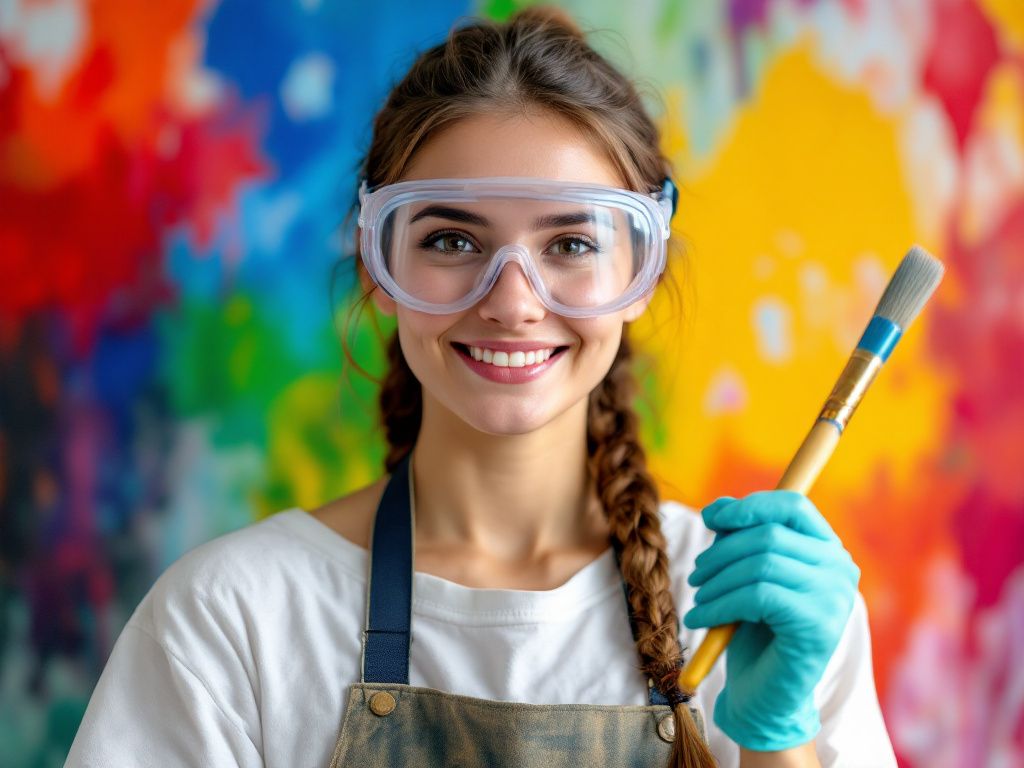You’re about to embark on a new painting project. Whether you’re transforming your living room with a splash of color or giving those old kitchen cabinets a fresh sheen, there’s a certain satisfaction that comes with doing it yourself. But wait—a quick pause to ponder: Have you thought about your skin in all this? If not, you probably should. Get ready to dive into the nitty-gritty of protecting your skin from all those paints and chemicals you’re about to slather around your space.
Why Bother with Skin Protection?
The feeling of dipping your brush into that vibrant sea of color will have you so excited that protecting your skin might easily slip your mind. Here’s the deal: Paint, along with the cleaning products and thinners that typically hang around in DIY land, can be quite the tough cookie for your skin. And trust me, nothing spoils the fun faster than itchiness or irritation brought on by chemical exposure.
The Real Costs of Forgetting Skin Protection
Ignoring skin protection can lead to irritation and if you’ve ever caught a nasty rash, you’ll understand it’s not a place you want your skin to be. Consistent exposure without taking necessary precautions could even pose serious health risks down the line. Think dry, peeling skin or more severely, absorbed chemicals sneaking into your bloodstream. You want to avoid these outcomes like you’d dodge a dollop of wet paint on an unsheltered piece of flooring. Tricky stuff.
Understanding the implications isn’t just for your health, but also impacts the quality of your artistry. Imagine dipping your raw, cracked fingers into a sticky pot of paint. Grasping a delicate paintbrush becomes an exercise in frustration rather than creativity.
Your Skin’s Knight in Shining Armor: Simple Protective Gear

Let’s chat about what you can wear to shield yourself from head to toe. Now, this doesn’t mean you have to look like you’re suiting up for intergalactic warfare.
Basic Gear You Shouldn’t Paint Without
**1. Gloves:** Opt for nitrile gloves over latex; they’re tough and don’t obstruct your agility. Latex can be deteriorated by many solvents while nitrile hangs tight. Painting in hot weather? Powder-free options slip on like butter.
**2. Long-Sleeved Shirts and Pants:** Cover as much as possible. Old clothes work best—they might earn a few splashes of paint, but that’s what they’re there for.
**3. Safety Goggles:** Safety first, especially if you’re spraying or up close and personal with paint rollers. Accidental splashes can occur, and trust me, eyeball paint is not trending this season.
**4. Masks or Respirators:** Think of it as a shield against fumes. Dust masks are basics; respirators are for the pros dealing with intense fumes. Your lungs will thank you after a long day of painting.
Step-by-Step: Your DIY Skin Protection Routine
Okay, now that we’ve got our fashion covered, let’s dig into your routine.

- Preparation:
- Find a well-ventilated area to reduce the fume concentration.
- Lay down drop cloths to minimize paint contact with skin or surfaces.
- Suit Up:
- Don your gear in this order: goggles -> mask/respirator -> long sleeve attire -> gloves last (simple sequence helps keep everything sanitary and efficient).
- Skin Cleaning & Maintenance:
- Use gentle, non-chemical cleaners post-painting. Think mild soap and water—repeat after me, the moisturize!
- Save commercial skin cleansers like “Heavy Duty Hand Cleaners” for when you have clinging paint that refuses a gentle goodbye.
- Regular Breaks:
- Little breather here and there can minimize overexposure and enhance concentration. Just make sure to take off contaminated gear in-between breaks—they’re no cozies!
Common Mistakes AND How to Avoid Them
Blunder No.1: Skimping on Breaks
All those fumes can catch up with you, leading to dizziness or worse. Set alarms if necessary.

Blunder No.2: Overusing Harsh Cleaners
Resist the urge to douse your skin in harsh cleansers or abrasive scrubbers post-project. Over-exfoliating further irritates rather than helps.
Blunder No.3: Wearing Upcycled Protective Gear
Reusing safety gear seems resourceful, but it could be more contamination than conservation. Discard and replace as needed to keep your skin safe and splinter-free.
Wrap-Up—and a Little More Wisdom
At the end of the day, skin protection during painting projects is like the unsung hero of your DIY endeavor. Without it, that satisfying brush stroke won’t feel all that satisfying when dealing with skin irritation. Reconnect with this idea each time you dive into a can of your favorite hue.
Finally, remember painting in safe, ventilated areas—not just to protect your skin but your lungs too! Rule of thumb: if you’re going a bit overboard with paint work each week, check back in with yourself about your routine and see if it needs refreshment or even expert advice.
Repainting your understanding isn’t just an immediate step, but a proactive nod to future checks and balances. Putting a note on safety is maintaining the canvas of your health. Now you’ve got your armor—go dive into your colors, paint those stories, and craft the art of safety like no other!
Frequently Asked Questions About Skin Protection
How Do I Determine My Skin Type for Effective Skin Protection?
Determining your skin type is crucial for effective skin protection. The most common skin types are oily, dry, and combination skin. Oily skin is often shiny and can be caused by stress, humidity, genetics, or hormones. Dry skin may appear red or flushed and is often weather-induced. Combination skin is a mix of both oily and dry skin. Knowing your skin type helps you choose the right products and treatments[1][3].
What Skincare Routine Should I Follow for My Skin Type to Ensure Proper Skin Protection?
The skincare routine varies based on your skin type. For oily skin, use an oil-free and non-comedogenic cleanser, moisturize daily, and apply sunscreen. For dry skin, use a cleanser with hyaluronic acid, an alcohol-free toner, and a moisturizer to maintain hydration. For combination skin, balance products to address both oily and dry areas[1][3].
How Can I Protect My Skin from Sun Damage?
Protecting your skin from sun damage is essential. Regardless of your skin type, using a broad-spectrum sunscreen daily is crucial. Even dark skin, which produces more melanin, can get sunburned and develop skin cancer. Applying sunscreen and avoiding prolonged sun exposure are key to preventing sun damage[1][3].
What Products Are Best for Treating Acne and Other Skin Imperfections While Protecting the Skin?
For acne-prone skin, products containing benzoyl peroxide and salicylic acid are effective. For other skin imperfections like eczema, use mild cleansers, moisturizers, and avoid harsh irritants. For general skin protection, consider products with ingredients like ferulic acid, which is beneficial for a wide range of skin concerns from acne to wrinkles[1][2][5].
References










